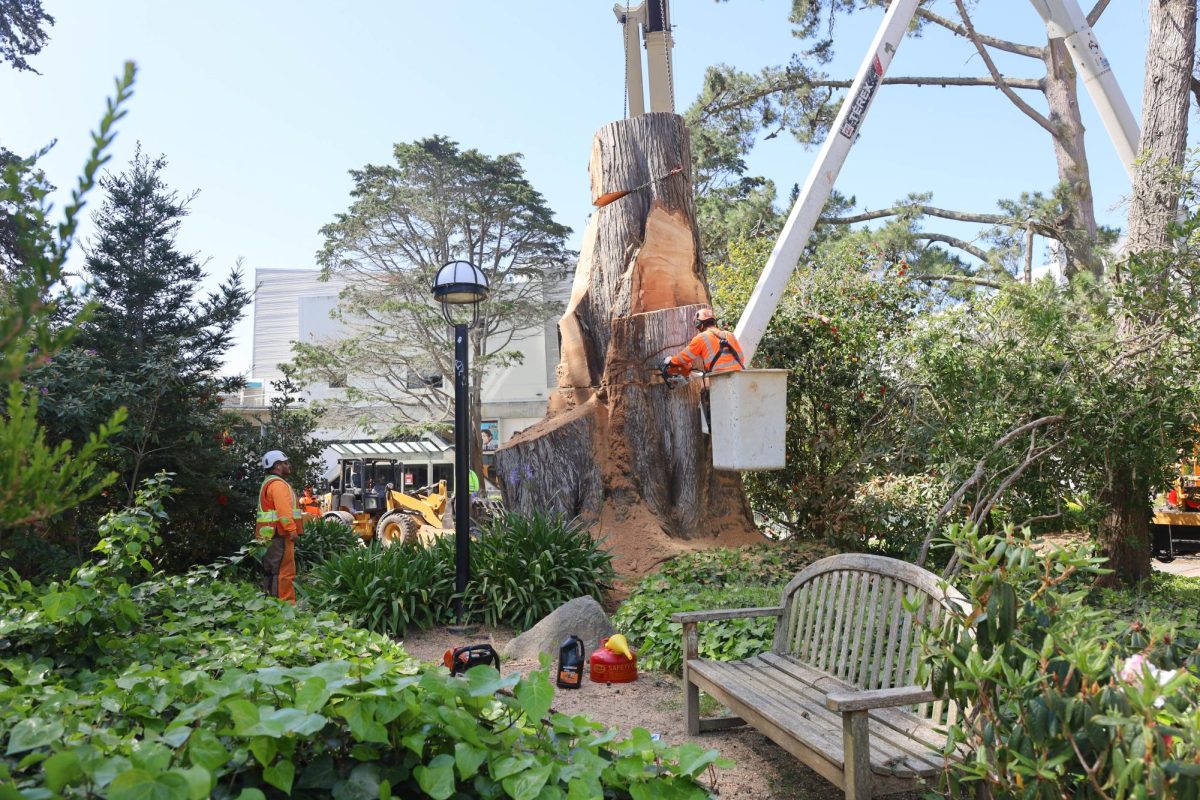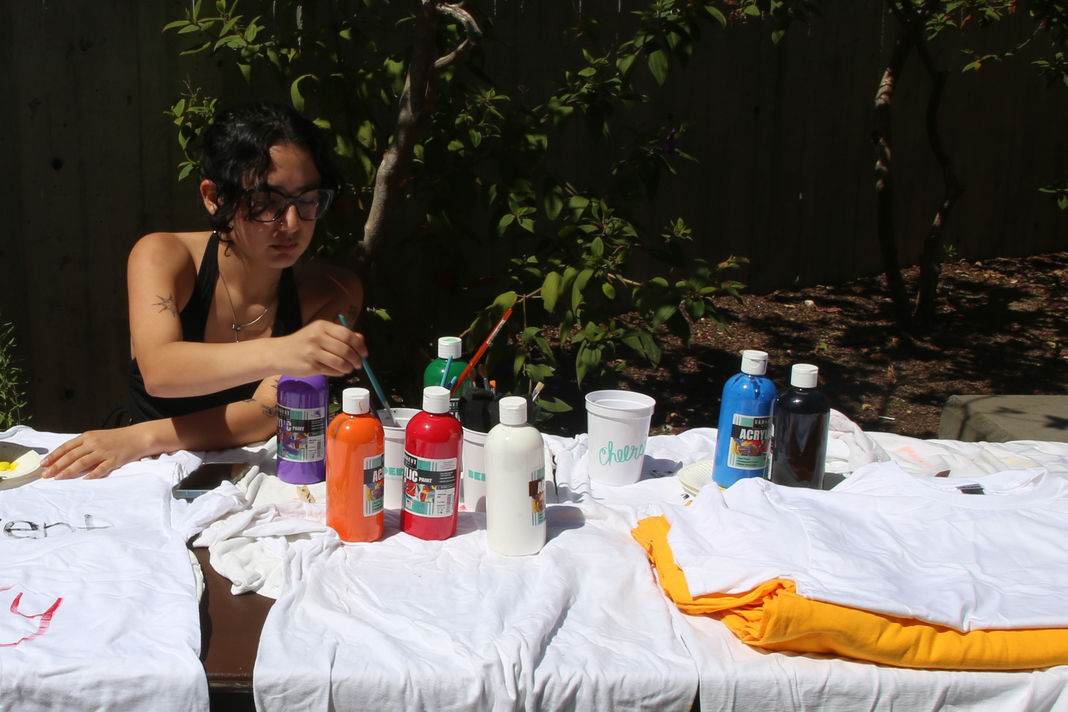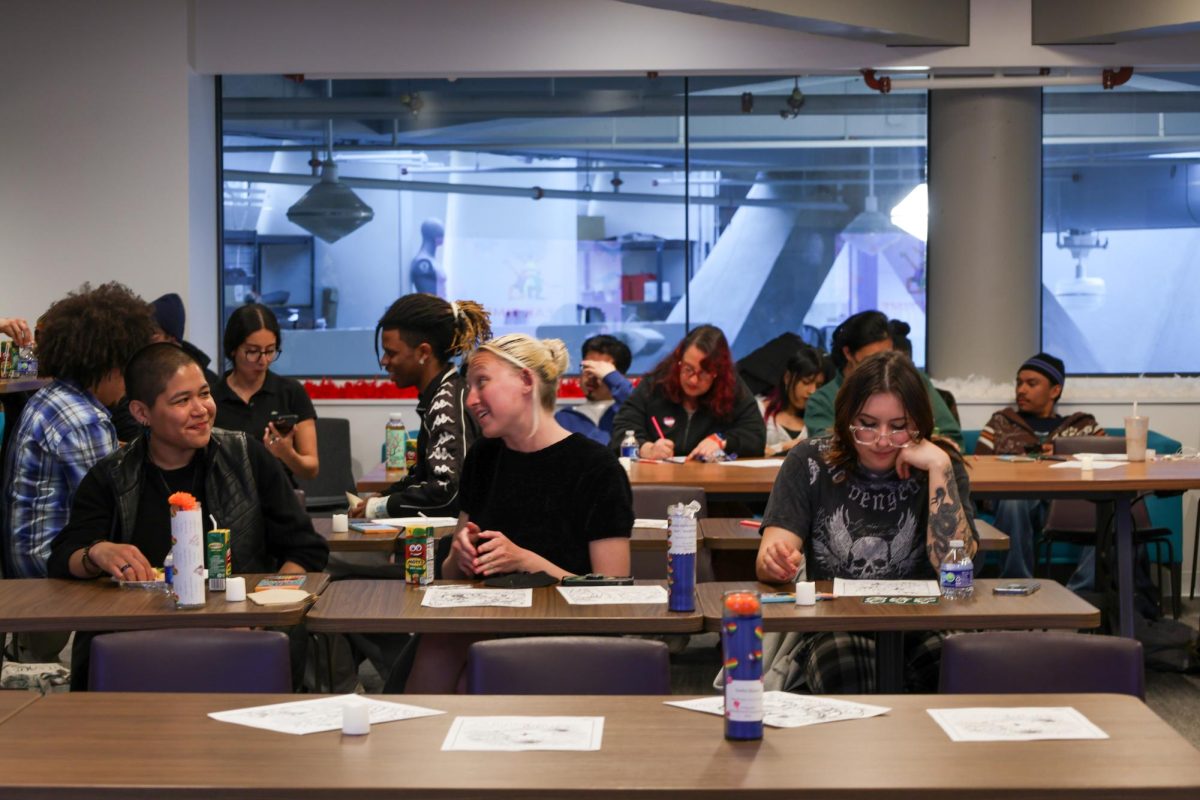Students promoting their organizations in Malcolm X Plaza on Thursday morning found an accumulation of wood dust piling up on their tables.
That dust came from one of the two trees San Francisco State University sawed down this week — one beside the Cesar Chavez Student Center and another in the AIDS Memorial Grove in front of the Gymnasium.
The trees were affected by pitch canker, a disease that impacts pine trees, according to Grounds Manager Robert Murphy. A large cavity had formed in one tree, visible during its removal, which led to the disease spreading.
“Almost every pine tree on this campus is in the process of dying,” Murphy said.
The tree next to the student center dates back to the 1970s when it was constructed, according to Meredith Eliassen, special collections librarian.
Eliassen, who was a student at SFSU in the late ‘80s, said the tree that was chopped down in the grove was one of her favorite trees. She recalled the area as a good place to sit and reflect.
“The trees have experienced our campus,” Eliassen said. “They’ve been a presence and have been the silent companions to our students.”
Dying trees can be safety hazards, especially during storms where limbs and branches are at liberty to fall. In 2014, the university removed more than 100 trees that were deemed hazardous. In 2023, two trees fell over entirely — one on top of the Fine Arts building and another onto a campus maintenance vehicle.

Murphy oversaw the removal of the pine tree that was taken out of the AIDS Memorial Grove. The grove was dedicated in 1989 in honor of World AIDS Day, but according to Murphy, the tree predated the campus. A cluster of trees in front of the Gymnasium is visible in a 1954 map of the campus. Plants and shrubs, which are now trees, were brought to university grounds from Treasure Island. The island was the site of the Golden Gate International Exposition, San Francisco’s 1939 World’s Fair.
“This tree is dangerous now,” said Murphy, regarding the tree being removed from the grove. “I would have let it die the rest of the way if it wasn’t dangerous, but we lost some branches and I didn’t want to see someone get hurt.”
Char Bennett, an elected leader of the Young Democratic Socialists of America chapter, was tabling in the plaza when one of the tree’s limbs was being severed. Bennett said the trees provide a lot of shade for organizations when they table and help with the overall aesthetic of the plaza, “so it’s not just all brick and concrete.”
Bennett said it always saddens them to see a tree get cut down.
“If it is a safety issue, I understand that,” Bennett said. “But I think there’s limbing and thinning that you can do without cutting the whole tree down.”
Zubair Aslem, a business student, is worried that the university isn’t doing enough to take care of the campus.
“Maybe they’re not taking care of the trees properly,” Aslem said. “We need to make sure to take care of our nature. The way we would respect anything else in this world, we should respect our nature, we should respect the trees as well.”
“The grim truth is, it was going to happen sooner or later,” said Tyler McClure, a kinesiology student. “It’s a bummer that the campus has to make those kinds of decisions like, ‘People aren’t going to like this, but it’s what’s for the best.’”
Murphy said he plans to replant the whole grove, eventually replacing the trees that were cut down.
Eliassen said the plants that replace the trees should be native plants that have deep roots.
“When we hit another drought, they will survive,” Eliassen said. “I would advise and encourage our campus to be careful in how they select plants to be resilient so that our gardens reflect our campus’ resilience.”










